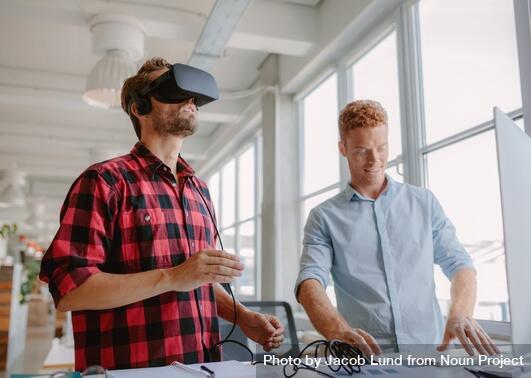
Using Virtual-Reality Technology to Improve Cycleway Design
Research by TfNSW and University of NSW to investigate how to integrate cycling facilities into urban and suburban environments safely.
Background
Building on previous research undertaken in 2013, Transport for NSW (Transport) will use virtual reality (VR) technology to better design and integrate cycling facilities into urban and suburban environments. The research is designed to entice the significant proportion of people who are interested in cycling but concerned about safety.
Transport’s current evidence base in this area is well articulated in the Transport Cycleway Design Toolbox (2020) which draws on the Cycling Aspects of Austroads Guides (2017 Edition). The Toolbox illustrates good, better and best practice at the NSW government level. It also shows how streets might be reconfigured to better achieve desired outcomes.
What continues to exist however is a disconnect between insights gained from stated preference surveys and people’s actual preference. In a stated preference survey, problems arise with participants’ engagement or responding, based on participants’ own assumptions or other attributes not included in the study design.
To overcome this gap, the University of NSW will use virtual reality as a means of evaluating possible design elements (i.e. facilities) for their acceptance by potential cyclists. The Travel Choice Simulation Laboratory, (TRACSLab), located at UNSW, is a world-first in multi-modal, multi-user transportation visualisation.
The simulator can integrate cycling and driving, with study participants able to cycle or drive through urban transportation systems. By using the simulator and “immersing” study participants in the environment, various design interventions can therefore be evaluated by their impacts of participant behaviours while in the simulated environment.
Objectives
- Understand current best practice cycling facility design internationally and locally and to identify the design, transport, and built environment components that influence bike-ability.
- Rigorously and empirically test, validate, and improve these best practice principles in location specific settings within Sydney through creating and testing a simulation / visualisation prototype to understand community (i.e. the interested but concerned cohort) preferences for cycling environments and facilities in order to inform astute investment decisions.
- Use the relevant findings to create an open-source cycling facility classification matrix tool to enhance local and state governments’ active transport planning and design capabilities.
- Provide Transport and other government agencies, with an improved evidence base to develop the next iteration of cycleway design guidelines.
This literature review of international cycle-way design aims to understand the common practices and themes of current bicycle planning, and consider these trends alongside Transport for NSW’s Cycleway Design Toolbox: Designing for Cycling and Micromobility. Focusing on plans that include specific infrastructure types and designs, rather than purely strategic or network plans, thirty-nine bicycle plans from twenty-two jurisdictions both nationally and internationally were reviewed.
Updates
Further updates will be provided as this project progresses.
This research is being delivered in partnership with iMOVE CRC and supported by the Cooperative Research Centres program, an Australian Government initiative.
